Eduard Tisse
Nacimiento : 1897-04-01, Liepāja, Latvia
Muerte : 1961-11-18

Director of Photography
Eisenstein shot 50 hours of footage on location in Mexico in 1931 and 32 for what would have become ¡Que viva México!, but was not able to finish the film. Following two wildly different reconstruction attempts in 1939 (Marie Seton's 'Time in the Sun') and 1979 (Grigori Alexandrov's '¡Que viva México!') Kovalov has here compiled another hypothetical version of what Eisenstein's film might have been.

Himself
Eisenstein shot 50 hours of footage on location in Mexico in 1931 and 32 for what would have become ¡Que viva México!, but was not able to finish the film. Following two wildly different reconstruction attempts in 1939 (Marie Seton's 'Time in the Sun') and 1979 (Grigori Alexandrov's '¡Que viva México!') Kovalov has here compiled another hypothetical version of what Eisenstein's film might have been.
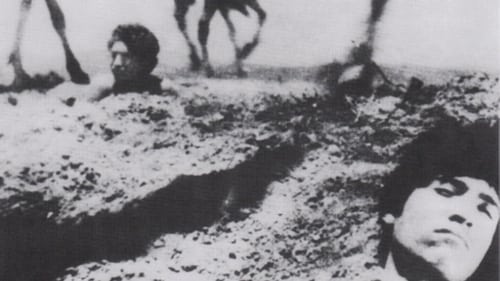
Director of Photography
Film en cuatro episodios, más un prólogo y un epílogo. El prólogo presenta imágenes alegóricas del México prehispánico. El episodio "Sandunga" recrea los preparativos de una boda indígena en Tehuantepec. "Fiesta" desarrolla el ritual de la fiesta brava, mientras que "Maguey" escenifica la tragedia de un campesino victimado por rebelarse contra su patrón. "Soldadera" muestra el sacrificio de una mujer revolucionaria. El epílogo, también conocido como "Día de muertos", se refiere al sincretismo de las distintas visiones que coexisten en México alrededor del tema de la muerte.
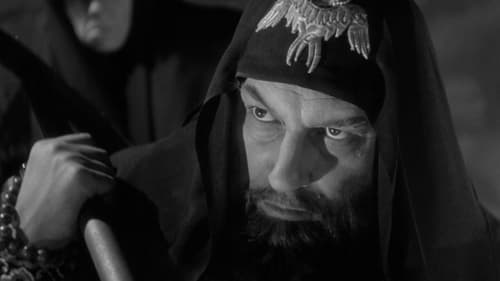
Director of Photography
Mientras Iván el Terrible intenta consolidar su poder estableciendo un ejército personal, sus rivales políticos, los boyardos rusos, se conjuran para asesinar a su zar.

Himself (archive footage)
A USSR documentary about the filmmaker Sergei Eisenstein

Director
The Immortal Garrison is set in June of 1941, at the outset of the Nazi invasion of Russia. A group of Soviet servicemen, languidly biding their time at the Brest fortress on the Polish border, are suddenly galvanized into action. All desires to return home to their wives and sweethearts are swept aside as the courageous garrison unites to thwart a common enemy. The siege of Brest has served as story material for countless Russian films: in lieu of contradictory evidence, Immortal Garrison must be adjudged the best of these films. For its American release, Immortal Garrison was double-featured with another Soviet production, The Mexican.

Director of Photography
The young composer Mikhail Glinka performs his new work at a soiree at earl Vielgorsky's house. However, the public is accustomed to Western music, and reacts coldly to the creation of the composer. This makes him very sad, but soon he decides to go learn the art of music in Italy. After returning from Italy, he is full of desire to write national Russian opera. Vasily Zhukovsky proposes a subject: a feat of Ivan Susanin. Tsar Nicholas I change the name of the opera to A Life for the Tsar and assigns a librettist - Baron Rosen. Acquaintance with the future co-author shocked Glinka: Rosen speaks Russian with a noticeable German accent. The premiere was successful, but Glinka was still not entirely happy with the libretto: "False words were written by Rosen". When Nicholas I learned that Ruslan and Lyudmila was written on Pushkin's subject, he sees it as sedition. The bitter experience of the composer brighten his supporters.

Camera Operator
Soviet and American soldiers are meeting on the shores of the Elbe river in Germany in 1945.

Director of Photography

Director of Photography
Yugoslav farmer-turned-partisan Slavko Babić starts an uprising against the fascist Germans and their allies.
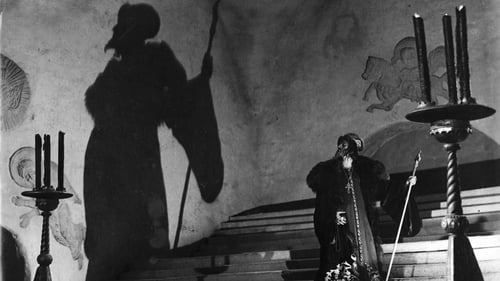
Director of Photography
Al inicio de su reinado, Iván el Terrible afronta la traición de la aristocracia e incluso de sus amigos más cercanos mientras busca unir al pueblo ruso.

Director of Photography
Second attempt to create a feature film out of the 200,000-plus feet of film which Soviet film-maker Sergei Eisenstein shot during 1931-32 in Mexico for American socialist author Upton Sinclair, his wife and a small company of investors. The projected film, to be called "Que Viva Mexico", was never completed due to exhaustion of funds and Stalin's demand that Eisenstein return to the USSR (he had been absent since 1929). The first attempt at editing the footage, in the USA, resulted in "Thunder Over Mexico", released in 1934. In 1940, Marie Seton, from the UK, acquired some of the footage from the Sinclairs in an attempt to make a better cutting according to Eisenstein's skeletal outline for the proposed film. This film has apparently been lost.
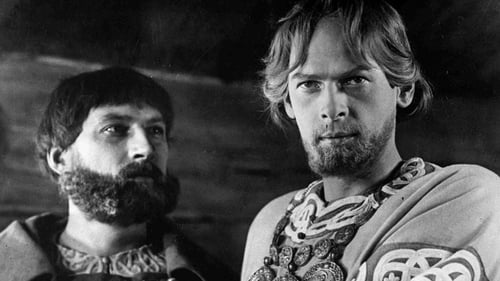
Director of Photography
Siglo XIII. Relato épico sobre el príncipe Alexander Nevsky, que defendió victoriosamente el norte de Rusia del ataque de los teutones: la batalla se libró sobre la superficie helada del lago Peipus. También tuvo que hacer frente a la invasión de Rusia por el ejército mongol dirigido por Gengis Khan.

Editor
Aerograd is a 1935 Soviet film by Ukrainian director Olexander Dovzhenko, Mosfilm-VUFKU coproduction. It is a futuristic adventure story set in the Soviet Far East. Considered one of two sound masterpieces by Dovzhenko, the other being "Ivan".

Director of Photography
During his adventure in Mexico, Sergei Eisenstein made footage of a Mexican "Death Day" celebration for inclusion in his "Que Viva Mexico!" film project. When the 200,000-plus feet of film he eventually exposed in Mexico was first attempted to be made into a feature film, "Thunder Over Mexico", the producers excluded the Death Day material for subsequent compilation as an independent short subject. Silent with music track and explanatory English intertitles.

Director of Photography
As was common in Diaz's Mexico, a young hacienda worker finds his betrothed imprisoned and his life threatened by his master for confronting a hacienda guest for raping the girl. This film is the first of several attempts to make a feature-length motion picture out of the 200,000-plus feet of film shot by Sergei Eisenstein, on photographic expedition in Mexico during 1931-32 for Upton Sinclair and a cadre of private American producer-investors. Silent with music and English intertitles.

Director
Documental hecho por Roman Karmen

Director of Photography
Footage of the aftermath of the January 14 1931 earthquake in Oaxaca, Mexico.

Writer
Footage of the aftermath of the January 14 1931 earthquake in Oaxaca, Mexico.

Director of Photography
Un breve film-ensayo en que las imágenes comentan una canción. (FILMAFFINITY)

Director of Photography
This film shows contrasting views of women with problematic pregnancies and the outcomes resulting when they seek out a back-alley abortionist, a trained and licensed abortion provider in a clinic, or an obstetrician capable of performing a Caesarian Section. The full film appears to be lost, but shortened versions, including one with dialogue scenes added in Germany in 1935, can be found on the internet. Additionally, Eisenstein's role in making the picture remains unclear: did he direct some or all of it, just edit it, or merely leave it to Alexandrov and Tisse to make? Released in the USA 1930 in a 65 minute (5800 ft.) version with English intertitles and a music track under the title BIRTH.

Editor
This film shows contrasting views of women with problematic pregnancies and the outcomes resulting when they seek out a back-alley abortionist, a trained and licensed abortion provider in a clinic, or an obstetrician capable of performing a Caesarian Section. The full film appears to be lost, but shortened versions, including one with dialogue scenes added in Germany in 1935, can be found on the internet. Additionally, Eisenstein's role in making the picture remains unclear: did he direct some or all of it, just edit it, or merely leave it to Alexandrov and Tisse to make? Released in the USA 1930 in a 65 minute (5800 ft.) version with English intertitles and a music track under the title BIRTH.

Director
This film shows contrasting views of women with problematic pregnancies and the outcomes resulting when they seek out a back-alley abortionist, a trained and licensed abortion provider in a clinic, or an obstetrician capable of performing a Caesarian Section. The full film appears to be lost, but shortened versions, including one with dialogue scenes added in Germany in 1935, can be found on the internet. Additionally, Eisenstein's role in making the picture remains unclear: did he direct some or all of it, just edit it, or merely leave it to Alexandrov and Tisse to make? Released in the USA 1930 in a 65 minute (5800 ft.) version with English intertitles and a music track under the title BIRTH.

Director of Photography
A farcical war between the forces of Commercial Cinema and Independent Cinema.
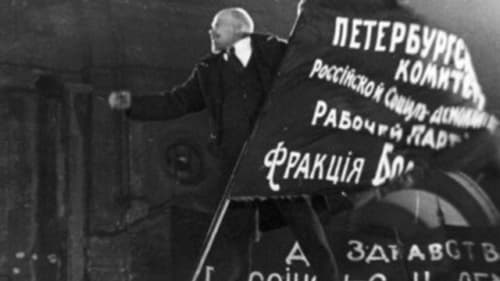
German Soldier
Reconstrucción de los acontecimientos ocurridos desde Febrero hasta Octubre de 1917. Una película en la que, siguiendo la filosofía comunista, no había personajes principales. La habilidad de Eisenstein y su experiencia se ve en los rápidos movimientos y en el ritmo en el montaje, así como en la construcción de intensas secuencias que no fueron bien entendidas por las tempranas generaciones rusas. El estreno se retrasó hasta 1928 debido a la presión de algunos grupos influyentes y, además, se cortaron algunas escenas. Aparecen en el filme muchos de los protagonistas de la revolución: los Guardias Rojos, los soldados y los marineros.

Director of Photography
Reconstrucción de los acontecimientos ocurridos desde Febrero hasta Octubre de 1917. Una película en la que, siguiendo la filosofía comunista, no había personajes principales. La habilidad de Eisenstein y su experiencia se ve en los rápidos movimientos y en el ritmo en el montaje, así como en la construcción de intensas secuencias que no fueron bien entendidas por las tempranas generaciones rusas. El estreno se retrasó hasta 1928 debido a la presión de algunos grupos influyentes y, además, se cortaron algunas escenas. Aparecen en el filme muchos de los protagonistas de la revolución: los Guardias Rojos, los soldados y los marineros.
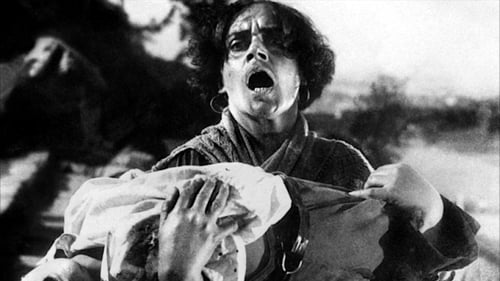
Director of Photography
Basada en hechos reales ocurridos en 1905, narra como la tripulación del acorazado Príncipe Potemkin de Táurida se cansan del tratamiento vejatorio e injusto de los oficiales. El detonante de la situación es la carne podrida que éstos quieren que los marineros se coman. Con este motín comienza el reguero revolucionario por Odesa y toda Rusia.
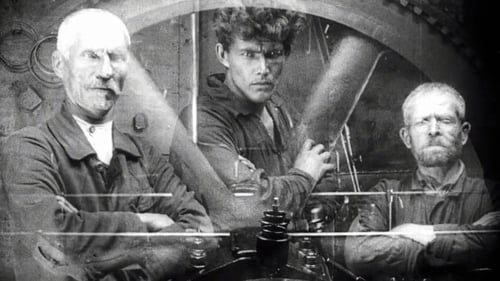
Director of Photography
Rusia zarista. Los obreros de una importante empresa están descontentos y, después de una reunión, deciden ir a la huelga. El director de la empresa informa de la situación a los responsables políticos y éstos envían a la policía para abortar la huelga. La tensión se dispara cuando un obrero se suicida al ser acusado injustamente de un robo.

Director of Photography
Dziga Vertov-directed Soviet newsreel made to commemorate the first anniversary of the death of Vladimir Ilich Lenin (21st January 1924 - 1925) drawn from 'The Final Journey', a Pravda feuilleton written on the occasion of Lenin's funeral by the man who had introduced Vertov to cinema, Mikhail Koltsov. Contains: First anniversary of Lenin's death: 1. Assassination attempt on Lenin and Soviet Russia's progress under his leadership / 2. Lenin's illness, death and funeral / 3. The year after Lenin's death

Cinematography
Konstantin Eggert both directed and starred as Count Shemet, cursed by his insane mother’s traumatic experience with a bear to have seizures during which he himself becomes a “bear” on the kill. Eggert’s direction of the movie is as odd as the plot. The whole film is unsettling. The titles are too long; there are interminable shots of irrelevant action; the cutting is uneven. The heroine is unsuitably comic, spasmodically jumping around, smearing ink on her face, knocking things over. For some reason the somber, doomed count falls in love with this girl and decides to marry her.

Director of Photography
A down on his luck peasant goes to fight in World War I and returns home a hero

























